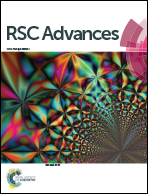Binding mechanism of tauroursodeoxycholic acid to human serum albumin: insights from NMR relaxation and docking simulations
Abstract
The binding mechanism of drugs with human serum albumin (HSA) is one of the most important factors in monitoring drug concentration in the blood and its transport to the destination tissues. The binding interaction of HSA with tauroursodeoxycholic acid (TUDCA), an endogenous bile acid, was investigated at the molecular level through NMR methodology. This methodology was based on the analysis of the selective and non-selective spin–lattice relaxation rate changes in ligand protons, affinity index, and molecular dynamics simulations to understand the binding strength and physical chemistry information on the interaction between HSA and the drug used in therapy. Results showed that TUDCA could strongly bind to HSA in site 1. The binding mode was further analysed using AutoDock. This study provided new insights into the interaction mechanism of TUDCA and HSA.


 Please wait while we load your content...
Please wait while we load your content...